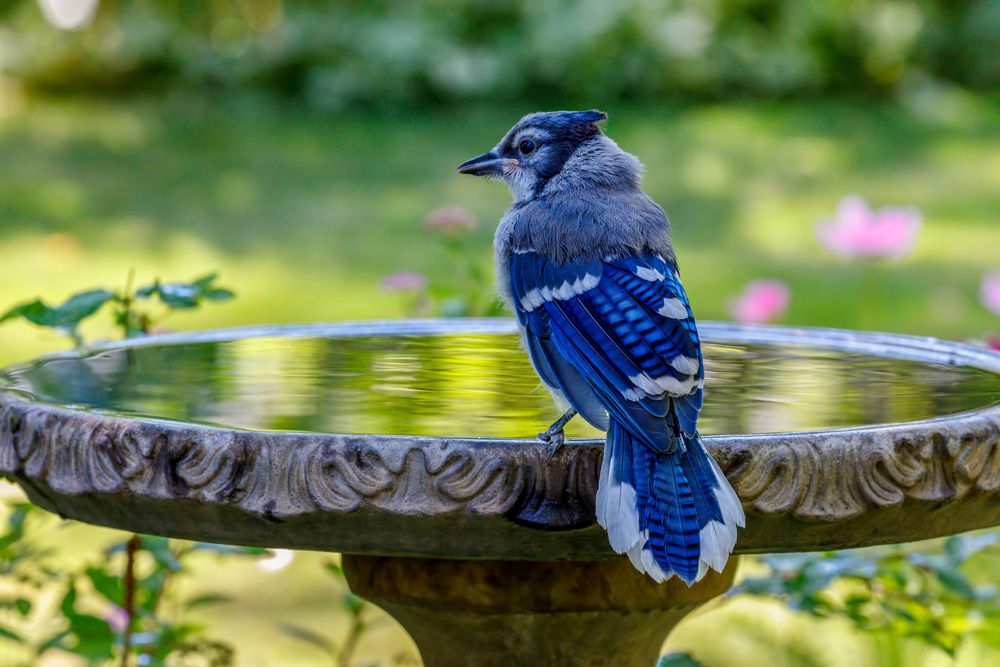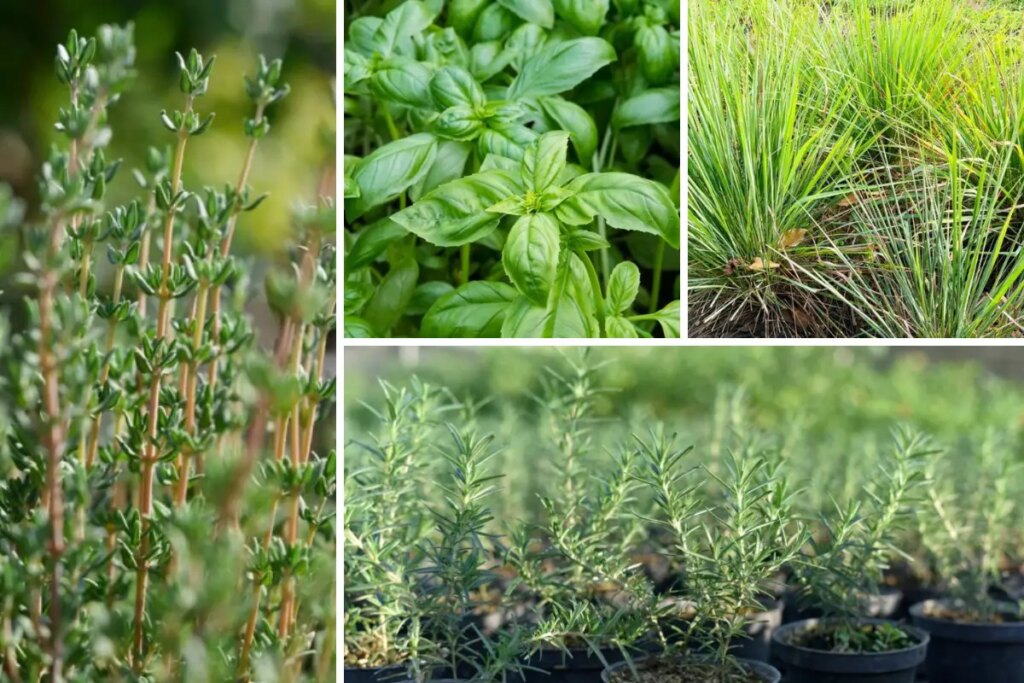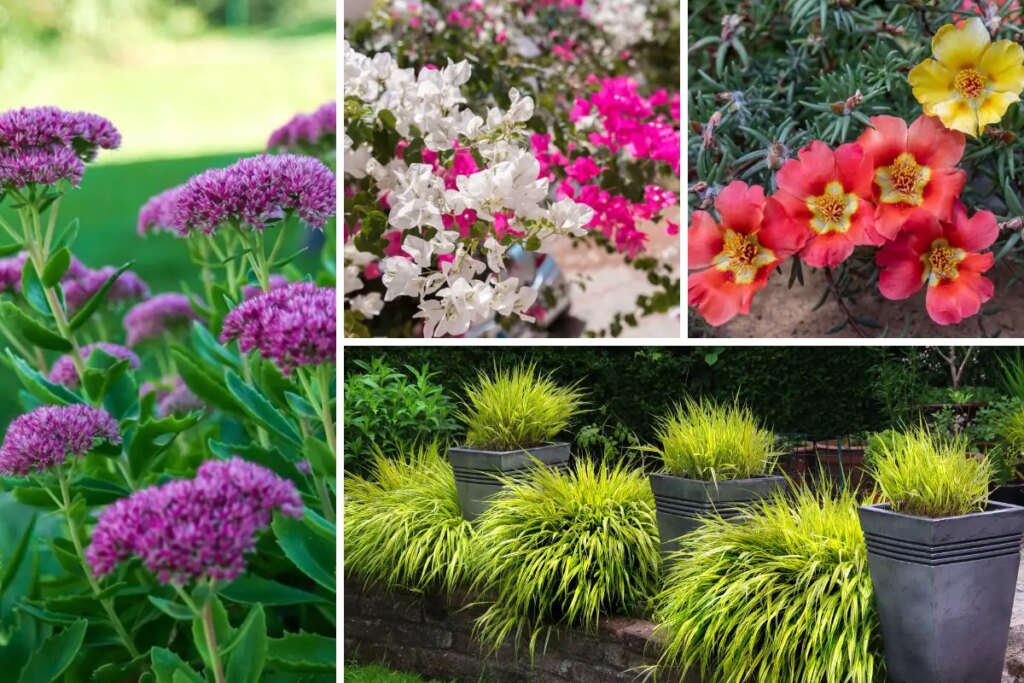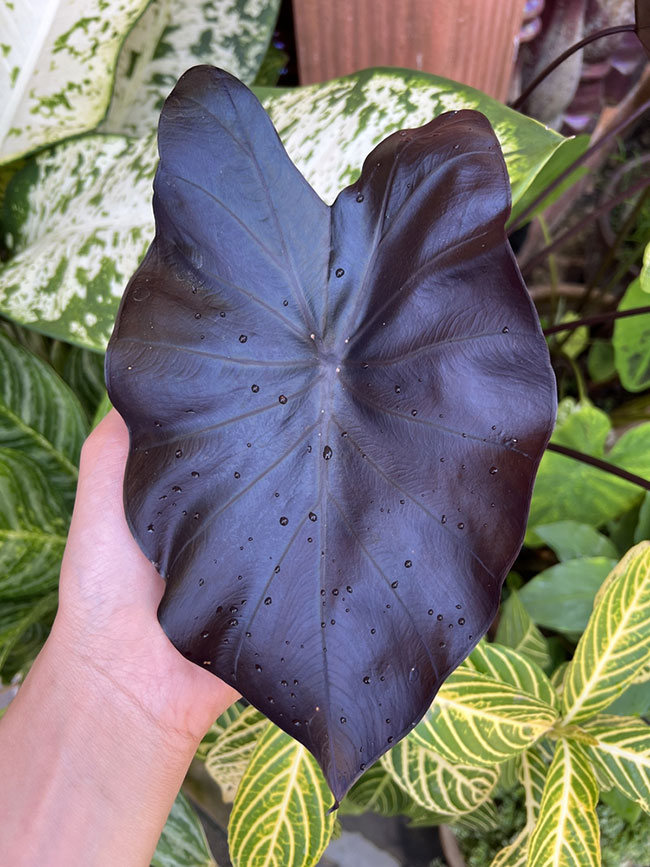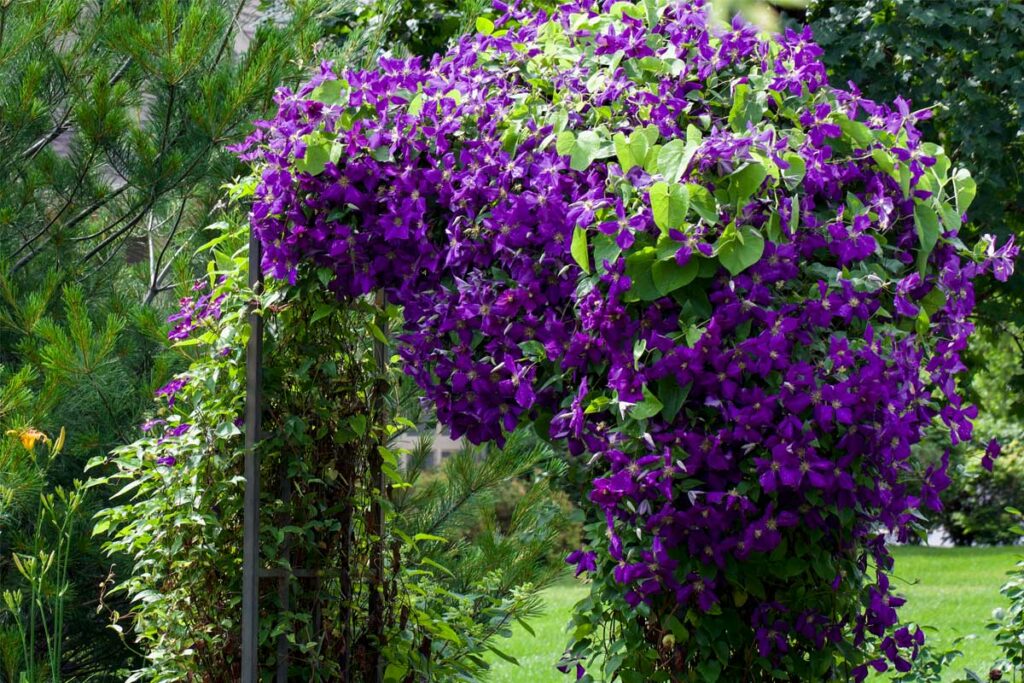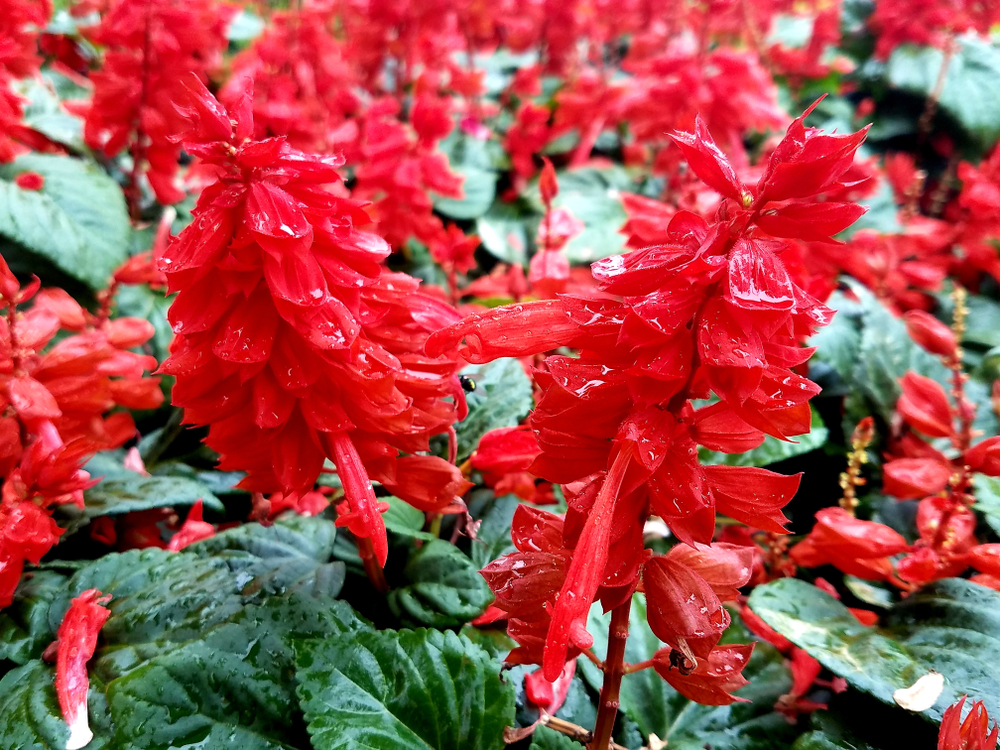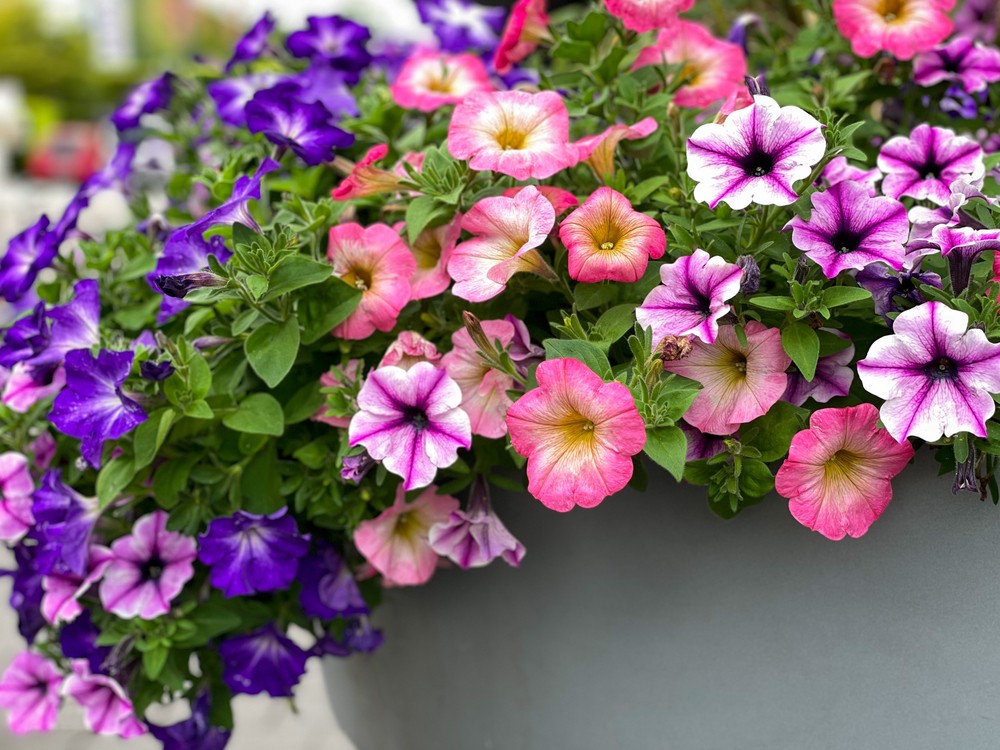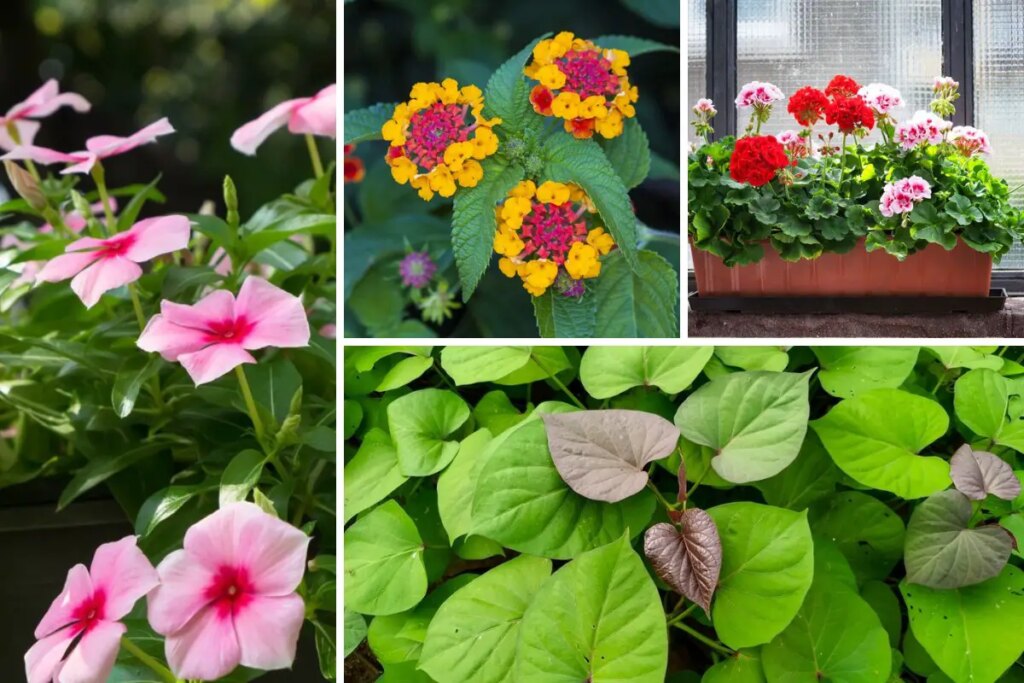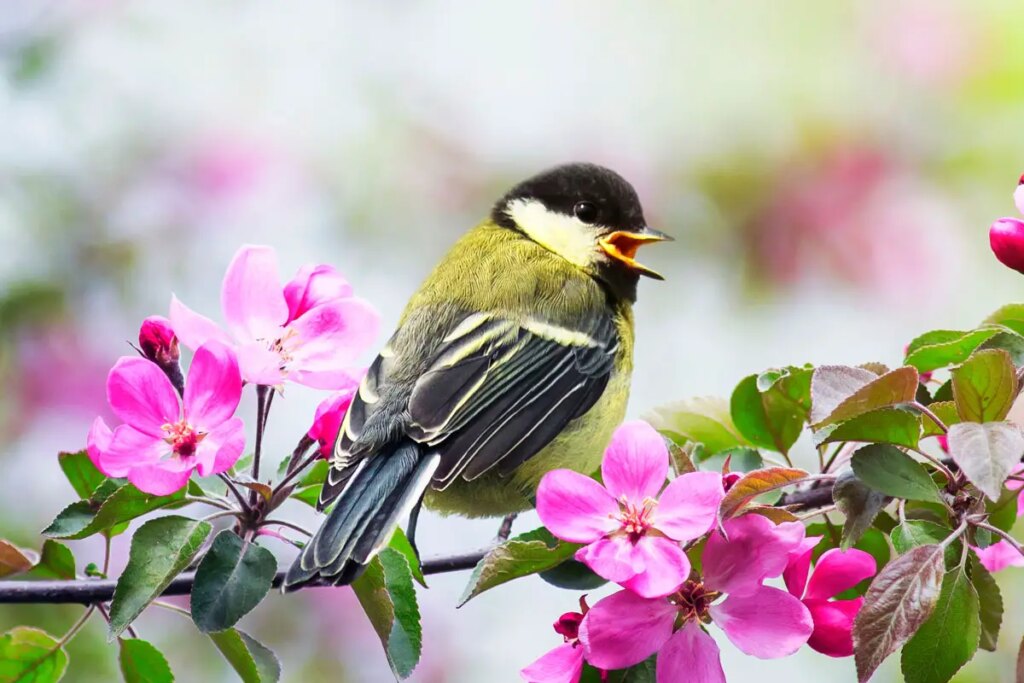
Chickadees are delightful little birds known for their distinctive black-and-white markings, cheerful songs, and inquisitive nature.
Attracting these charming creatures to your garden is not only enjoyable but can bring numerous benefits as well.
As they are insectivores, chickadees help keep your garden pest-free, making them an excellent form of natural pest control.
To entice these feathered friends to your garden, there are several steps you can take that cater to their specific needs for food, water, and shelter.
By providing them with appropriate resources, you’ll be able to create a welcoming environment that ensures they’ll want to stick around and call your yard their home.
In the following guide, we will explore some methods to make your garden a chickadee haven and highlight the reasons why these adorable visitors are so advantageous to have in your outdoor space.
By embracing these easy-to-follow tips, you’ll soon be enjoying the company of chickadees as they flit about your blossoming garden.
Why Chickadees Are Great for Gardens
Natural Pest Control
Chickadees are known for their voracious appetite for insects, especially during the breeding season. By inviting these small birds into your garden, you’ll provide them with a food source while they help you control pests like aphids, caterpillars, and other harmful insects. You can say goodbye to chemical pesticides as chickadees become your natural and eco-friendly pest control.
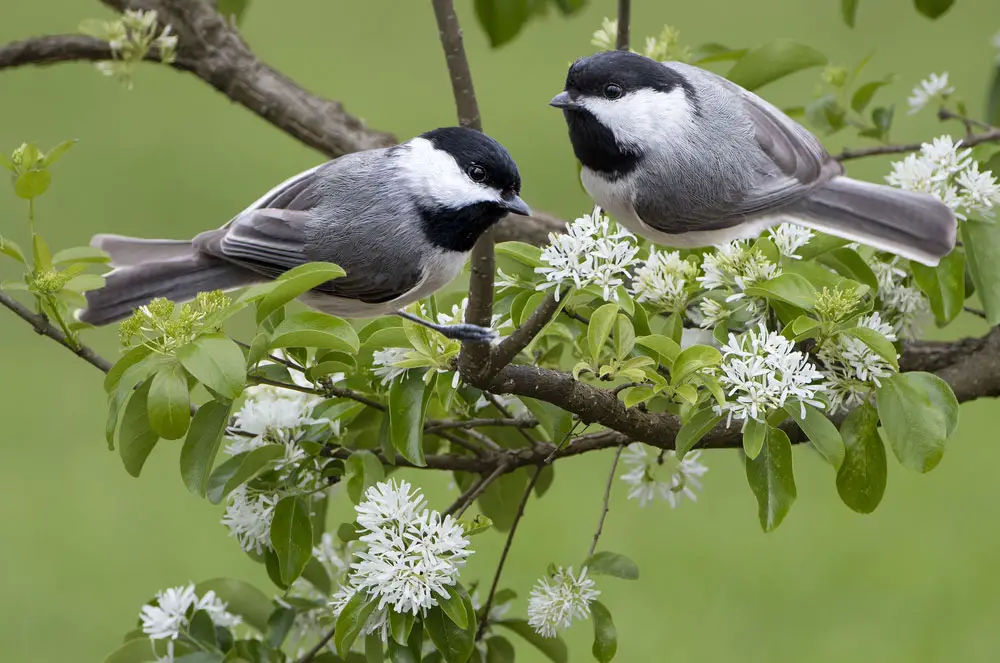
Pollination Helpers
Although chickadees are primarily insectivores, they occasionally feed on plant nectar and small fruits, thus playing a role in pollination. As they move from flower to flower, they transfer pollen, helping plants to produce new seeds and support the reproduction of various plant species. In this way, chickadees contribute to the biodiversity and health of your garden.
Chirpy Companions
Having chickadees around is not only beneficial for your plants, but they also bring a lively and cheerful ambiance to your garden. Their recognizable chirps and songs will make spending time outside an even more enjoyable experience for you and your family.
Additionally, creating a bird-friendly environment in your garden attracts other beneficial birds and wildlife, further contributing to your garden’s overall vitality.
By providing a welcoming habitat for chickadees, you’ll enjoy their benefits to your garden: natural pest control, pollination, and delightful companionship.
Attracting Chickadees to Your Garden
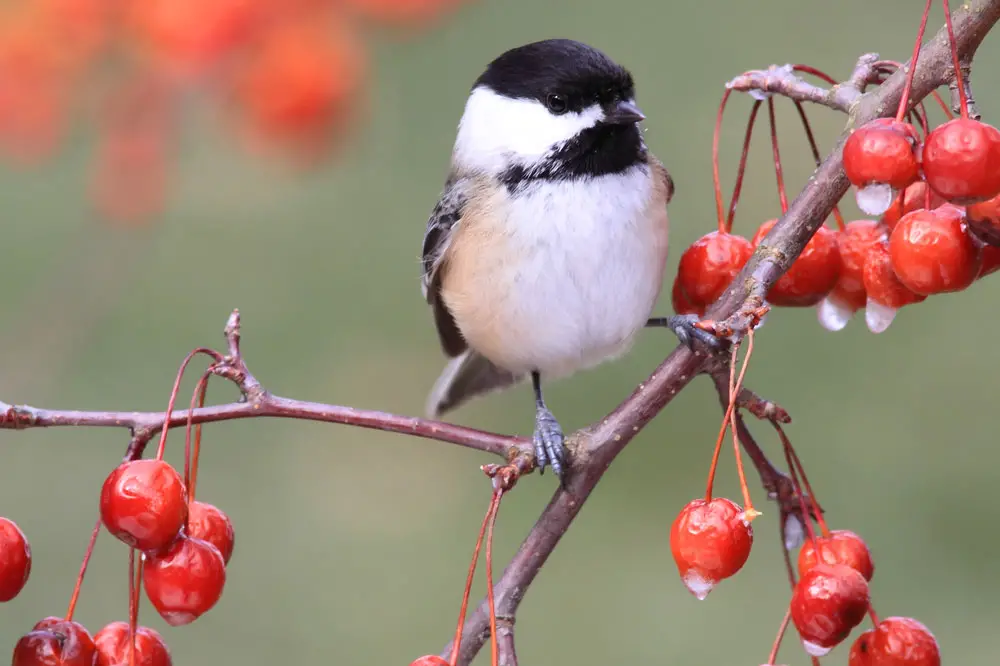
Chickadees are delightful little birds that can bring many benefits to your garden. In this section, we’ll discuss how to attract these charming creatures to your garden by providing food sources, creating nesting sites, and offering safe shelter.
Providing Food Sources
One of the best ways to attract chickadees to your garden is by offering them a variety of food sources. These birds primarily eat insects, but they also enjoy seeds, berries, and suet. To cater to their diverse diet, consider the following:
- Plant native trees and shrubs that produce seeds, nuts, and berries, such as dogwood, serviceberry, and elderberry.
- Install bird feeders filled with their favorite seeds, such as black oil sunflower seeds or hulled sunflower seeds.
- Offer suet in a cage-style feeder, especially during the colder months when insects are scarce.
Creating Nesting Sites
Chickadees are cavity nesters, meaning they prefer to build their nests in cavities found in trees or other structures. To encourage them to nest in your garden, you can:
- Leave dead or dying trees standing as long as they don’t pose a safety hazard. Chickadees often find natural cavities in these trees for nesting.
- Install nest boxes designed specifically for chickadees. Ensure that the entrance hole is 1-1/8 inches in diameter to accommodate chickadees while keeping larger birds out.
Offering Safe Shelter
Chickadees need protected areas to rest and hide from predators. To create a safe environment for these birds in your garden, keep these tips in mind:
- Plant dense shrubs and evergreens, such as junipers and holly, to provide cover and roosting sites.
- Provide a water source, such as a bird bath or small pond, so chickadees can drink and bathe safely.
- Keep cats indoors and be mindful of other potential predators in your garden.
By following these guidelines, you’ll create a welcoming habitat for chickadees, and they will reward you with their delightful presence and beneficial impact on your garden’s health.
Maintaining a Chickadee-Friendly Habitat
Keeping Feeders and Nest Boxes Clean
To maintain a chickadee-friendly habitat, it’s essential to keep feeders and nest boxes clean. Chickadees are sensitive to unsanitary conditions, and a dirty environment can attract pests and diseases. Regularly clean your feeders and nest boxes with a mild bleach solution (9 parts water to 1 part bleach), then rinse thoroughly and let them air dry.
- Frequency: Clean feeders at least once a month and nest boxes after each brood has fledged.
- Tools: Use a scrub brush and disposable gloves.
- Disposal: Dispose of debris and old nesting material in a sealed bag to avoid contaminating your garden.
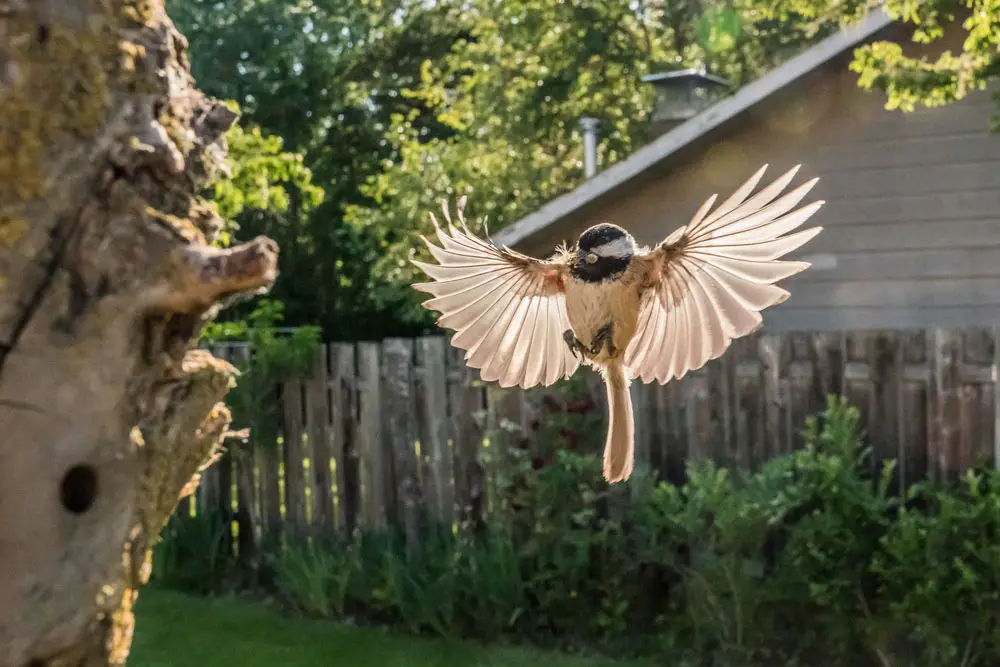
Cautions with Pesticides
Chickadees are a valuable asset to your garden because they help control insect populations. However, using chemical pesticides can be harmful to these garden visitors. Instead, opt for natural pest control methods whenever possible.
- Beneficial insects: Introduce predatory insects like ladybugs and lacewings to control aphids and other pests.
- Diatomaceous earth: This natural, non-toxic powder can be sprinkled on plants to deter many insects.
- Neem oil: As a last resort for particularly troublesome infestations, use organic neem oil, which is less harmful to chickadees than chemical pesticides.
Remember to always read labels and follow instructions when using any pest control products. By creating a clean, chemical-free environment, you will encourage chickadees to visit and help make your garden a healthier, more vibrant place.





